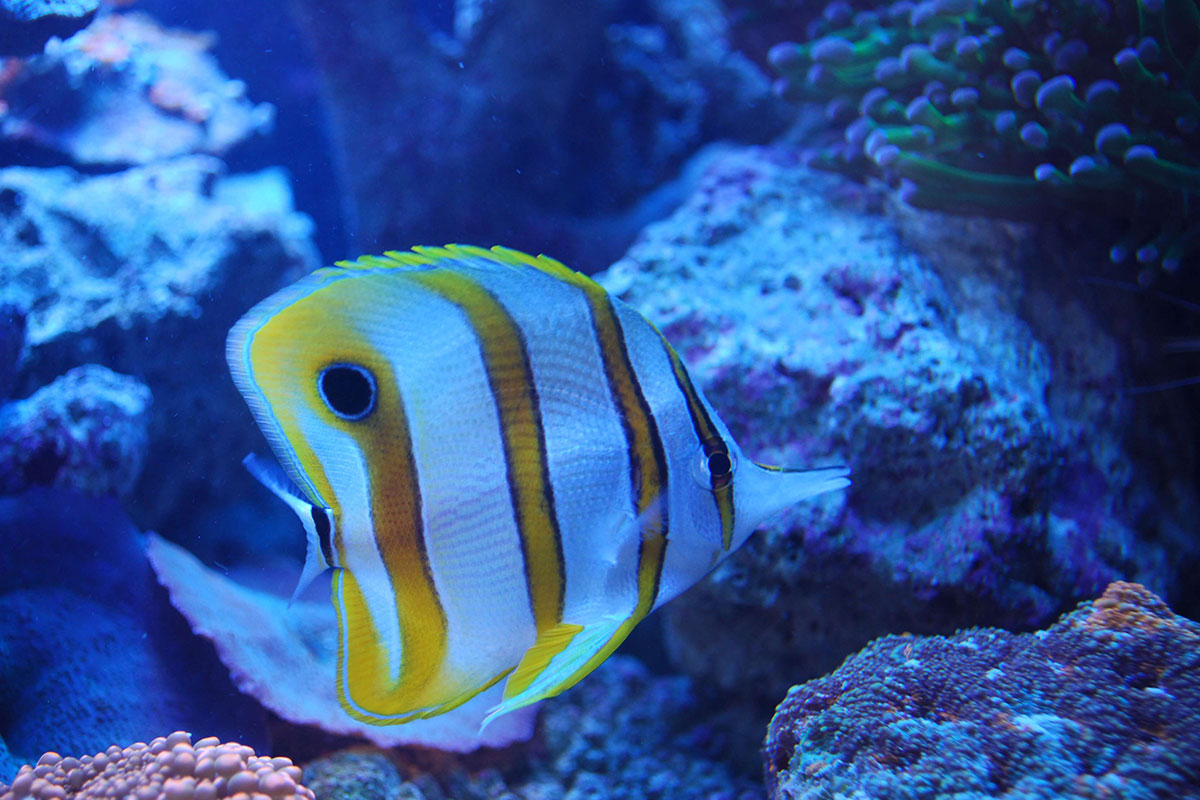If you’re reading this, then you already know the basics of what aptasia anemones are and what they can do. You now understand the need to remove them and want to know how. In this article we will explore methods of removing aptasia and what we have found to be most effective. Whether it’s one aptasia in your tank that is persistent or a full-blown infestation – there are ways of dealing with the problem in simple and practical ways.
First of all…Don’t freak out!
I remember finding a single aptasia in my little reef tank when I first got started. After doing research online and asking on forums, I was going into full panic mode. Looking back at it now, I can see how I overreacted as we often do in the hobby :) Don’t get me wrong, aptasia can hurt or even kill coral but in most cases it’s not an emergency and the aptasia is not necessarily killing anything..so in most cases you got plenty of time to deal with the problem before any damage is caused.
Water Quality
Taking care of hundreds of tanks over the years, we definitely have seen a correlation between water quality and aptasia infestations. So, first thing you need to do is get your tank in good shape…make sure you got acceptable levels of nitrates and phosphates, that you are not overfeeding, and that your aquarium does not have too many fish. Aptasia loves feeding on left over food and nutrients in the water…so deny them their food. Another thing worth mentioning is flow and food…see if the location of the aptasias has to do with a low flow area where food accumulates – if that is the case – add flow to your aquarium to prevent food from settling.
Aptasia Eaters – Peppermint Shrimp
In our experience, peppermint shrimp will eat aptasias and sometimes not. This has to do with where the shrimp were collected…Atlantic species have a better reputation at eating aptasia vs. pacific species. If you’re at the fish store or buying online, ask where they came from. Also, the size of the peppermint shrimp and the size of the aptasia matters…large aptasias will most likely go untouched by small specimens. So…my advice is to get large peppermints for the most part and a few small ones that can get into small crevices and eat the baby aptasias. We do recommend you try them out especially in smaller tanks where other predators may be too big to survive.
Aptasia Eaters – Copperband Butterflyfish
The Copperband Butterflyfish has to be in my top three favorite fish of all time. I love the look of this fish and its personality. So if you’re like me, you’d be happy to get one to eat your aptasia anemones. The good news is that they are very effective in eating them and usually get right to work. The bad news is that they don’t do well in small tanks and have a mixed survival record in captivity. I recall having one for a few weeks and seeing it die suddenly and then having one for two years and thriving. It’s worth mentioning that Australian species have had a better record of survival but do come with a hefty price. If you have tank that is 100g+ with aptasias it’s worth a shot :)
Aptasia Eaters – Matted Filefish (aka aptasia-eating filefish)
The Matted Filefish is one cool looking fish! It has a very distinct look and an interesting swimming pattern. It is a very effective aptasia eater and can do well in small or large aquariums. But, in our experience they will also eat zoas and other polyps. If you plan on getting one and don’t have polyp corals in your aquarium then you are in good shape. If you do have zoas, palys or other polyps then plan on removing the fish if needed..they are pretty easy to remove in most cases and are not the fastest of swimmers.
Manual Removal
Another simple way to remove aptasia anemones from your aquarium is by simply killing them and removing them. There are different products out there and I’m fairly certain they all work. We have always used “Joe’s Juice” which is injected into the mouth of the anemones and the anemone dies instantly. Make sure you do it when the tank is off so the water flow doesn’t disperse it around the tank and cause damage to other animals. We also use a small diameter vinyl tube to siphon out what’s left of the apatsia anemone. We find the manual removal method practical for removing a small number of them..for large infestations a natural predator makes more sense.
Conclusion
Aptasia anemones can cause damage to some corals and should be dealt with. To recap, don’t freak out :) Get your aquarium in good shape with ideal water quality and then choose the appropriate aptasia eaters and/or remove manually. If you follow our recommendations above I am certain that you will have success :) Happy Reefing!

